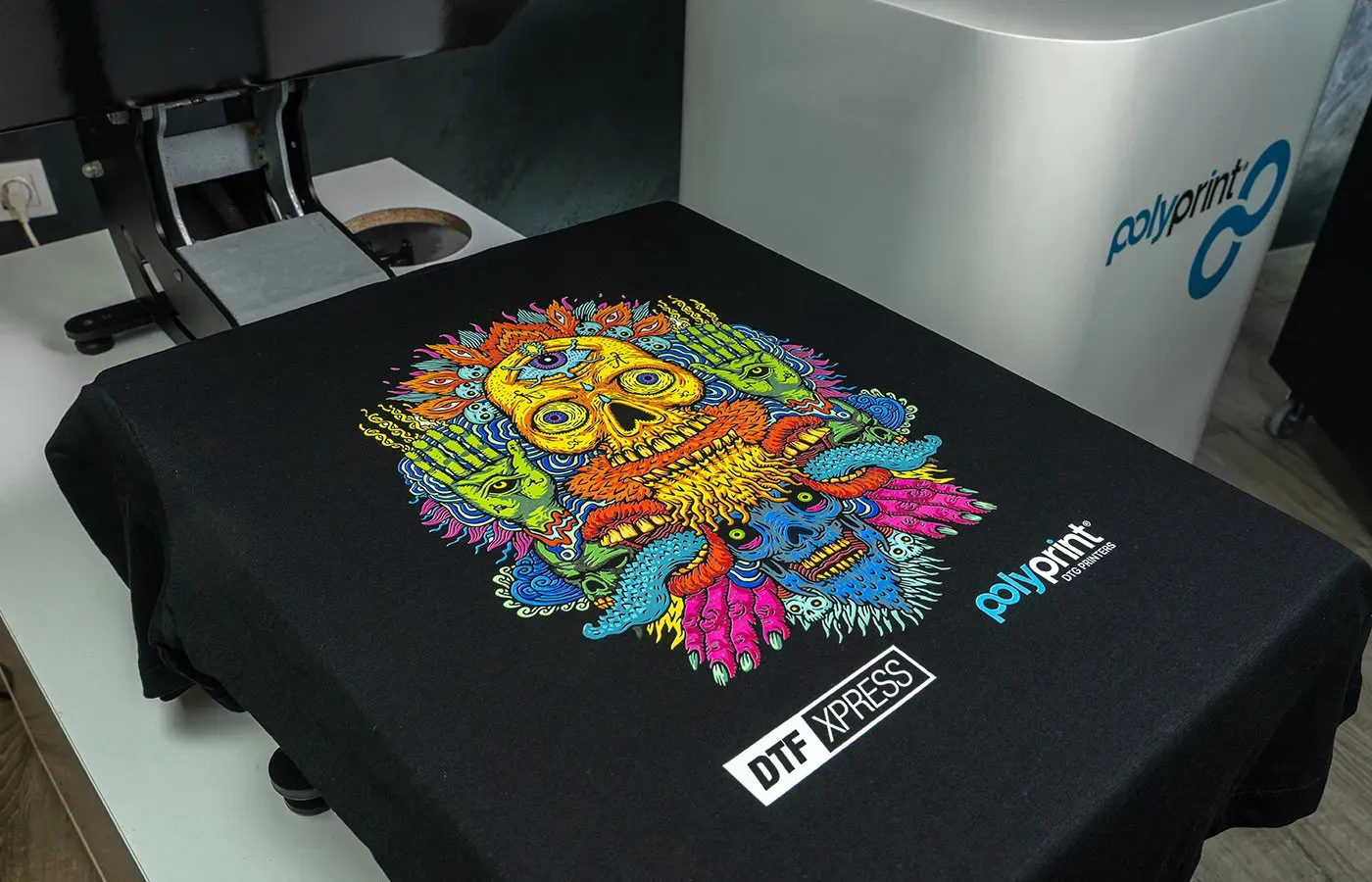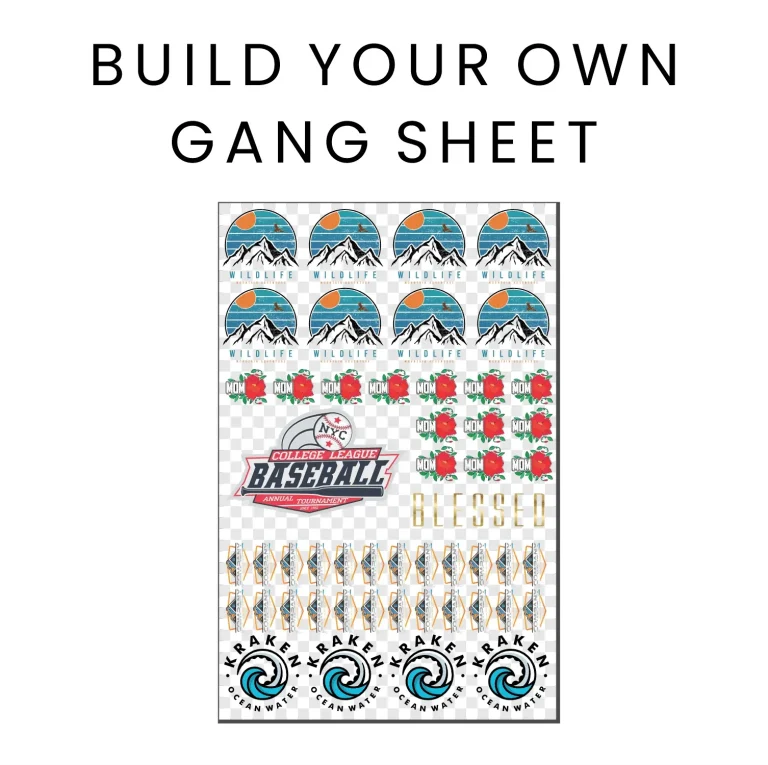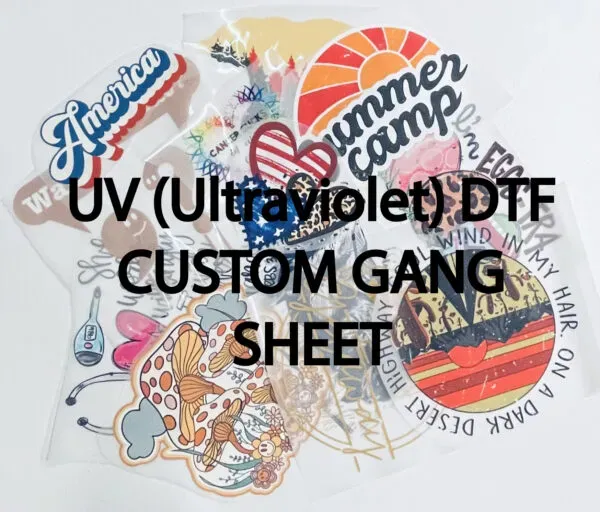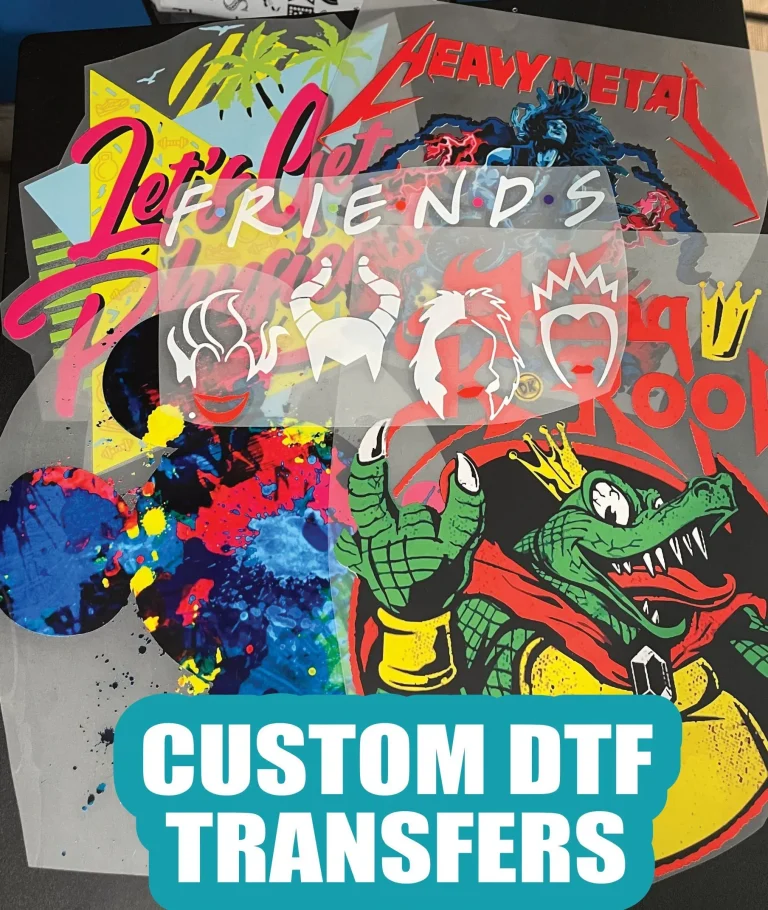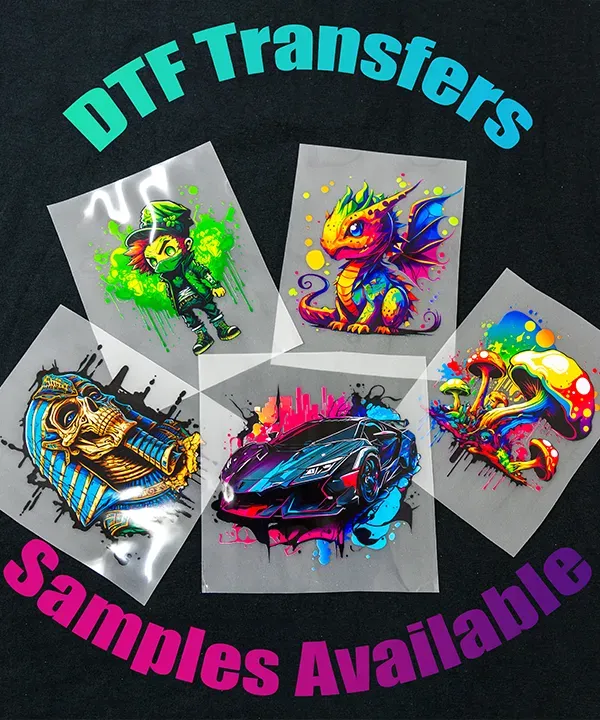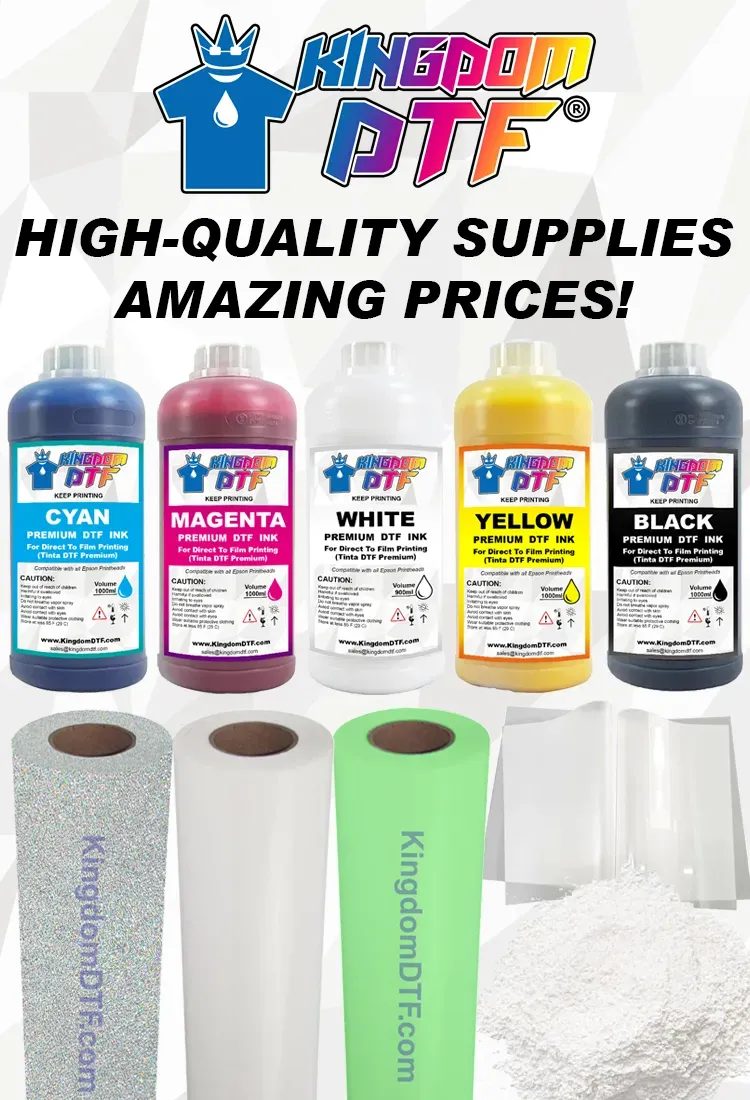In the realm of custom apparel printing, DTF printing has quickly become a game changer, renowned for its ability to produce stunning designs with remarkable efficiency. This innovative technique, known as Direct-to-Film printing, allows users to transfer vibrant prints onto a variety of fabrics with ease. For both small businesses and hobbyists, mastering the nuances of DTF printing can markedly improve their outcomes, making it a vital area of expertise. Not only does DTF printing enhance the quality of prints, but it also opens up the door to advanced printing techniques and web-to-print solutions that streamline the creative process. With tips on utilizing gang sheets and selecting the right DTF printer, this guide aims to elevate your understanding and execution of this dynamic printing method.
Direct-to-Film printing, often abbreviated as DTF, stands at the forefront of advanced printing technologies, significantly influencing how custom designs are created on fabric. This printing method is increasingly recognized for its versatility and efficiency, serving as a practical option for those involved in the apparel industry, including businesses and creative enthusiasts. By leveraging alternatives such as gang sheets and optimized DTF printers, users can embrace a more economical and effective workflow that enhances their production capabilities. The incorporation of innovative web-to-print solutions adds another layer of efficiency in managing printing orders, reflecting a shift towards digital methodologies in the industry. Understanding these related concepts not only enriches the DTF printing experience but also positions practitioners to stay competitive in a rapidly evolving market.
The Essentials of Direct-to-Film Printing (DTF)
Direct-to-Film (DTF) printing represents a breakthrough in the customization of textiles, allowing for vibrant and durable prints on a wide variety of materials. This innovative printing technique utilizes specialized inks that are transferred onto a film, which ultimately gets heat-pressed onto the fabric. Advancements in DTF technology have made it increasingly popular among both small business owners and individual crafters, providing a flexible solution without the limitations posed by traditional printing methods.
What sets DTF printing apart from other techniques like screen printing is its ability to produce detailed and colorful designs with precision and speed. Whether you’re customizing apparel or producing promotional items, DTF allows for quick turnaround times due to its efficiency in process and material usage. By incorporating modern DTF printers, users can achieve exceptional quality and a variety of textures, which makes this technique an essential part of any print shop.
Understanding Gang Sheets for Maximum Efficiency
Gang sheets are an essential component of successful DTF printing, significantly enhancing the efficiency of the printing process. By organizing multiple designs on a single film, gang sheets enable businesses to reduce material waste and optimization of their workflow. This method allows printers to maximize their output without sacrificing quality, making it a cost-effective solution for high-volume printing projects.
The strategic use of gang sheets can lead to notable savings in both time and resources. Operators can print several designs concurrently, ensuring that the film is utilized effectively. As a result, this technique not only increases production capabilities but also aids in minimizing overhead costs associated with printing. Incorporating gang sheets into your DTF printing strategy is crucial for streamlining operations and achieving better overall results.
Choosing the Right DTF Printer for Your Business
Investing in a high-quality DTF printer is a pivotal decision that can influence your printing success. Brands like AM.CO.ZA offer advanced compact models that cater to a wide range of users, from small scale businesses to home-based entrepreneurs. These printers are specifically designed to deliver professional-grade results without requiring extensive technical expertise, making them accessible to newcomers in the industry.
Moreover, the latest DTF printers support a variety of inks and substrates, giving operators the flexibility to work on diverse projects. This versatility ensures that businesses can cater to specific client needs, which is essential in today’s highly competitive market. By selecting the right DTF printer, you can enhance your production capabilities and maintain a strong competitive edge.
Innovations in DTF Printing Technology
The landscape of DTF printing is rapidly evolving with the introduction of innovative technologies and web-to-print solutions. Platforms, such as those developed by Snuggle DTF, are designed to streamline operations for commercial printers and resellers seeking to capitalize on the growing demand for quality printed products. These digital solutions allow for improved order management and better customer engagement, which is vital in today’s marketplace.
Adopting these technological innovations can significantly enhance the efficiency of your DTF printing business. By integrating digital platforms into your workflow, you can automate processes that were once time-consuming, ultimately improving your turnaround times and customer satisfaction. This shift toward embracing digital solutions is not just an enhancement; it’s becoming a necessary strategy for businesses striving for growth in the DTF printing sector.
Preparation Steps for Successful DTF Printing
Preparation is a critical stage in the DTF printing process that impacts the overall quality of the final product. Before beginning to print, it is essential to ensure that the substrate is compatible with both the DTF film and the required inks. Additionally, surfaces should be meticulously clean and free of any contaminants that might interfere with adhesion during the transfer process.
Following proper pre-treatment protocols is also crucial, as many fabrics necessitate specific treatments to ensure optimal bonding of ink. Understanding the requirements of different materials and applying the appropriate pre-treatments can significantly affect print quality and durability. Establishing a thorough preparation routine is fundamental for achieving consistent, high-quality results in DTF printing.
Mastering the Curing and Finishing Process
Curing is an essential step in the DTF printing process that determines the fidelity and longevity of the print. Proper heat settings and application of consistent pressure during curing will ensure that the inks properly adhere to the fabric without any defects or inconsistencies. The right temperatures and times vary based on the materials being used, making it critical to follow the manufacturer’s guidelines closely.
Additionally, quality control post-curing is vital for maintaining high standards in your printed merchandise. Inspecting each print for potential flaws before delivery ensures that customers receive nothing but the best, directly impacting the credibility and reputation of your printing business. Investing time in mastering the curing and finishing processes will set you apart in the competitive realm of DTF printing.
Frequently Asked Questions
What is DTF printing and how does it work?
DTF printing, or Direct-to-Film printing, is a method that involves printing designs onto a special film, which are then transferred onto garments using a heat press. The process includes printing the design, applying adhesive powder, curing it, and finally transferring it to the fabric.
What are gang sheets in DTF printing?
Gang sheets in DTF printing allow multiple designs to be printed on a single film. This technique maximizes material usage, reduces waste, and improves overall printing efficiency, making it a valuable strategy for both small businesses and larger operations.
How do I choose a DTF printer for my business?
When selecting a DTF printer, consider factors like print quality, user-friendliness, and compatibility with various substrates. Advanced DTF printers are now available that cater to different production scales, enabling businesses to produce high-quality prints efficiently.
What are the essential steps for successful DTF printing?
Key steps for successful DTF printing include ensuring surface compatibility, proper pre-treatment of fabrics, regular printer calibration, and carefully managing the curing process with correct heat settings and pressure application.
How can web-to-print solutions enhance DTF printing operations?
Web-to-print solutions streamline DTF printing operations by facilitating easier order management, reducing production time, and improving customer satisfaction. These platforms enable businesses to handle multiple orders effectively while maintaining high-quality output.
What finishing touches should be applied after DTF printing?
After DTF printing, it’s important to conduct thorough quality control checks for flaws, ensure proper curing of prints, and package items carefully. These steps are crucial for delivering high-quality, durable products to customers.
| Key Point | Details |
|---|---|
| Understanding Gang Sheets | Utilizing gang sheets boosts efficiency by maximizing printer utilization, reducing waste, and is cost-effective. |
| Utilizing Advanced DTF Printers | Advanced models allow greater access to high-quality DTF printing, offering user-friendliness and versatility. |
| Innovations in Technology | Web-to-print platforms enhance order management and fulfillment, streamlining the printing process. |
| Essential Steps for Success | Preparation, curing process, and finishing touches are vital for ensuring high-quality outputs. |
Summary
DTF printing is a revolutionary method that offers exceptional quality and versatility for custom apparel printing. By understanding and mastering the essential components such as preparation techniques, gang sheets, and the latest advancements in DTF technology, businesses can significantly enhance their production processes. This not only maximizes efficiency but also ensures that clients receive high-quality, durable products. As the landscape of DTF printing continues to evolve, staying informed on the latest tools and techniques is crucial for any professional looking to succeed in this dynamic industry.

